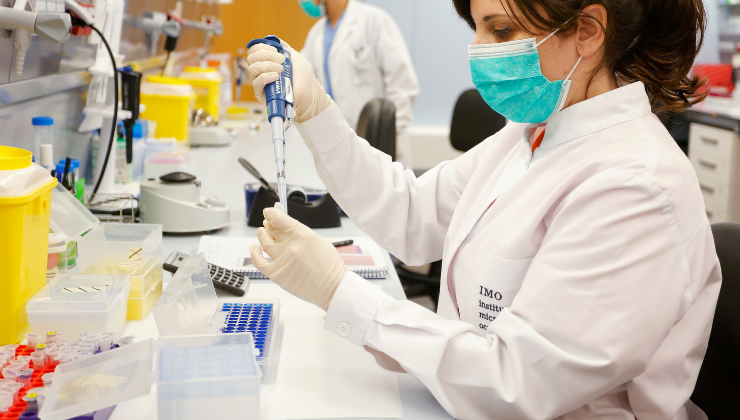The team of geneticists of the IMO Foundation, led by Dr. Esther Pomares, has just made a finding that corroborates the existence of the "Shilca" syndrome, proposed a few months ago by Swiss and Italian researchers and of which only 2 families had been described until now. This set of pathological disorders causes skeletal and cerebral anomalies, developmental implications, and Leber's congenital amaurosis, a type of retinal dystrophy which, despite being a minority disease, causes 20% of blindness at school age.
The research team, also linked to the IMO Grupo Miranza center in Barcelona and the R+D+i Department of Grupo Miranza, has identified a third family (the first in Spain) with clinical manifestations correlated with this syndrome, which confirms its existence.
Furthermore, it has been proven that Shilca syndrome does not only appear if the same specific mutation is inherited from both father and mother (consisting of a duplication of a DNA fragment), as in the first 2 families described, but that this duplication can also be accompanied by other pathogenic variants.
"The aim is not only to locate the altered gene, but also to determine the nature and impact of its mutations, in order to be more precise in the prognosis and treatment indication for each patient, preparing them for future gene therapies".
Dr. Esther Pomares
Knowing the genetic diagnosis of a rare disease means a great change for the patient, since determining the gene and mutation responsible in each case is the first step to be able to design and apply gene therapies in the future. In some cases, these therapies could specifically correct the alteration in the DNA, thereby preventing vision loss.
This finding, recently published in the "International Journal of Molecular Science", is not the only advance that the IMO Foundation team has shared with the scientific community in recent months.
First case of combined corneal dystrophies
Another study by the IMO Foundation research team, published in the journal "Cornea", has identified the world's first known case of a patient in whom two corneal dystrophies coexist: Meesmann's dystrophy and Lattice dystrophy, rare diseases that erode the ocular surface and cause vision loss.

Close-up image of a human eye, where the cornea can be seen.
Despite this clinical anomaly, by studying the genes associated with both pathologies, it has been possible to identify a new mutation that explains the molecular cause of Meesmann's dystrophy and describes the first case where these 2 well-differentiated corneal dystrophies coexist.
The IMO Foundation: 10 years of research
These findings are part of one of the IMO Foundation's basic research projects, which aims to identify the key areas of DNA that can trigger certain eye diseases with no known genetic cause.
In this sense, Dr. Esther Pomares stresses the need to continue researching the genetic basis of hereditary eye diseases, with the aim of expanding genetic diagnosis and making it increasingly effective.
These projects are developed thanks to the altruistic contributions of individuals, groups and organizations that support the progress of research as the only tool to stop, and even cure, hereditary eye diseases such as retinal dystrophies. At this moment, IMO Foundation is running the annual fundraising campaign "Letras por la Ciencia" ("Letters for Science"), which gives the opportunity to its donors to collaborate with the research. More information clicking here!
